Northern lights
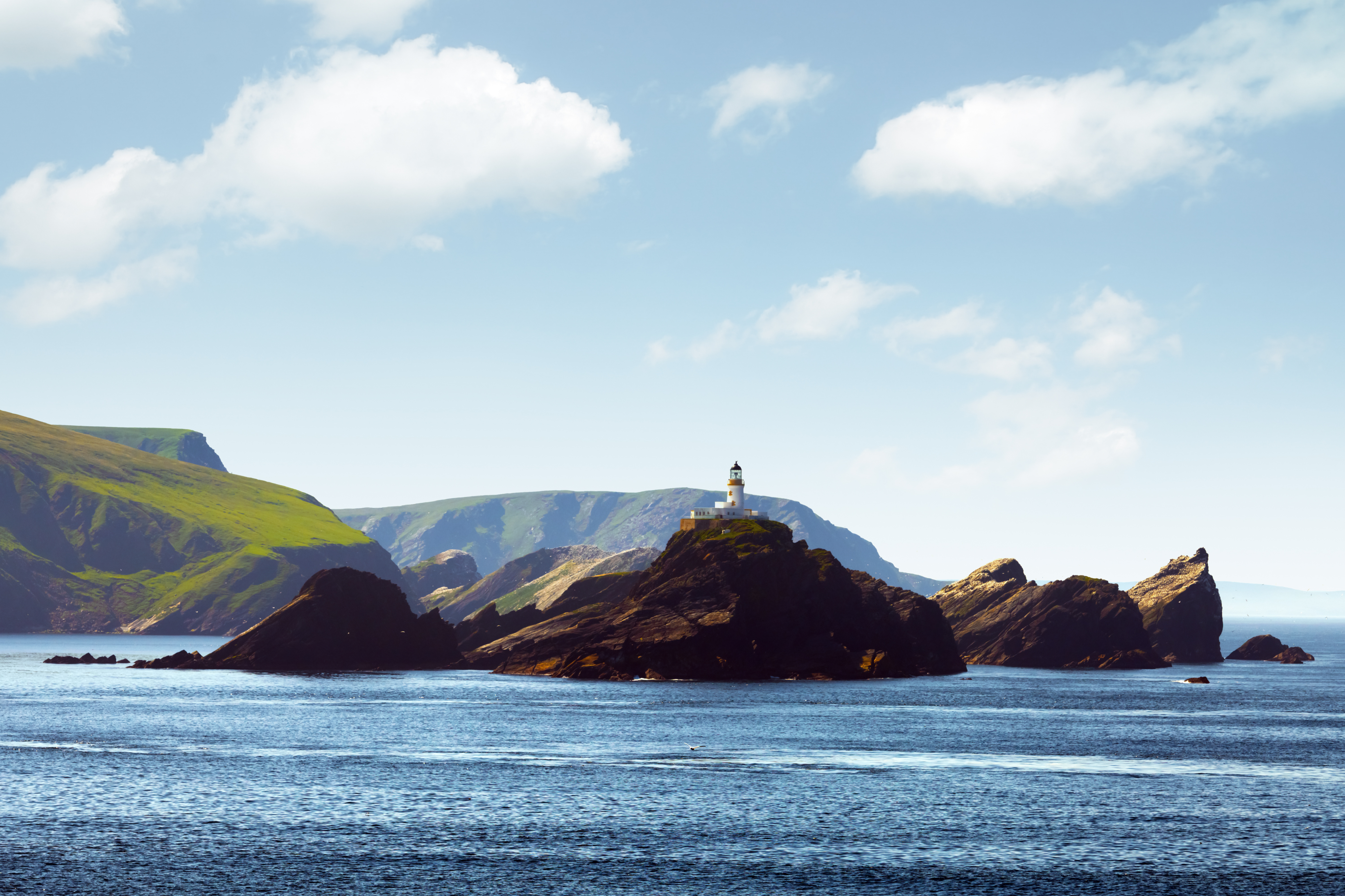
Orkney and Shetland are key to hopes for expansion for the Scottish salmon sector, reports Robert Outram
Some of the most exciting developments in Scottish fish farming are taking place in the Northern Isles – Orkney and Shetland – where operators are investing in expansion, new sites and improved processing facilities.
Back in December 2021, speculation over the future of Grieg’s assets in Shetland ended when they were acquired by Scottish Sea Farms. Since then, Scottish Sea Farms has embarked on a programme of investment, growth and consolidation.
Following the acquisition, processing in Shetland was transferred from Grieg’s centre at Lerwick to the Scottish Sea Farms facility in Scalloway, on the west coast of Shetland’s mainland, to allow for a complete refit of the Lerwick site.
By the end of last year, the £2.5m refit of Lerwick was complete. Processing capacity at the plant has doubled, from 25,000 tonnes annually to 50,000 tonnes.
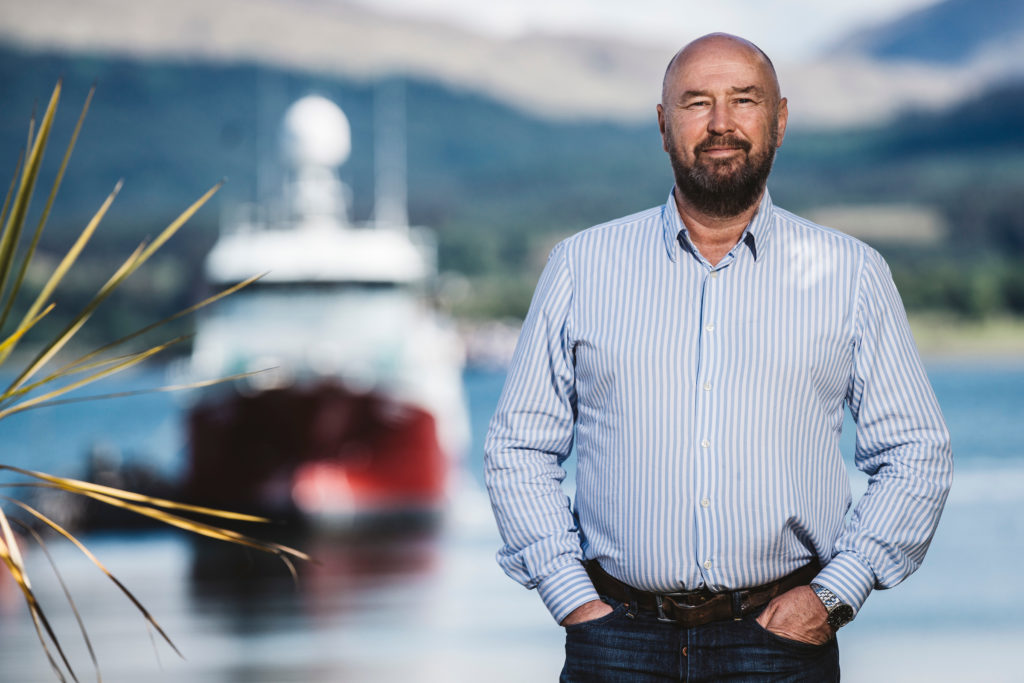
Scottish Sea Farms’ Head of Processing Operations, Donald Buchanan
Head of Processing Operations Donald Buchanan told The Source, the company’s in-house newsletter, that the aim was to streamline processing into one centre, maximising efficiencies.
He said: “We were looking to create a ‘facility of the future’, capable of receiving all fish from our expanded Northern Isles estate.
“With a larger footprint and proximity to the ferry network, Lerwick made the obvious choice.
“We stripped back the existing processing facility to its very core, right down to adding new floors, drains and internal fabrication. Then we reconfigured the layout to create self-contained areas for the key activities of harvesting, gutting and packing, each of which was fitted out with a mix of existing and all-new equipment.”
As well as being larger, the new plant is also more geared to animal welfare, with a humane stunner from Ace Aquatec installed to render the fish unconscious before they even leave the water. A smaller, secondary stunner ensures that any bycatch or cleaner fish are also humanely despatched.
In the gutting area, there are six high-speed BAADER machines capable of handling fish of 2kg to 7kg, with a dedicated handline to manually gut any fish outside of this specification.
The gutted fish are then kept chilled in new refrigerated containers ahead of grading and packing. The new-look facility is also more automated, with robotic pallet handling.
The new centre has also now received the necessary certifications, including RSPCA Assured, Global GAP, Label Rouge and retailers’ own schemes.
Scottish Sea Farms Head of Technical Andy Gourlay said: “Ensuring the facility complies with our many different certifications and standards has required a colossal amount of work from each of the teams involved: processing, engineering, IT and technical.
“However, by working together towards a shared goal, we’ve achieved it.”
Buchanan added: “Not only have we doubled capacity in the here and now, but there’s scope to increase that further to process up to 70,000 tonnes annually, over years to come, should we wish to.”
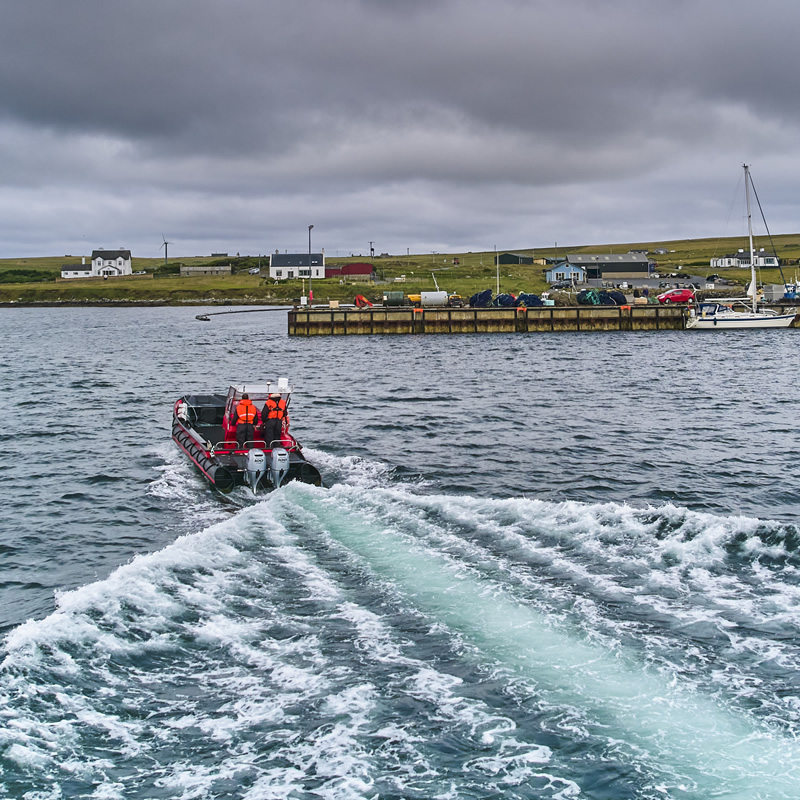
Cooke boat, Shetland
Investing for growth
Scottish Sea Farms has also been investing in its Shetland farm sites. For example, at Billy Baa it has been consulting on plans to consolidate several farm licences into one. The company says extensive hydrodynamic modelling indicates that the location is idea for growing salmon.
Consolidation, Scottish Sea Farms says, will make it possible to:
• Increase the space between pens.
• Maximise water exchange and oxygen levels in and around pens.
• Improve operational efficiencies.
• Boost fish health, welfare and survival.
• Grow harvest volumes.
Scottish Sea Farms’ vision for Billy Baa is to have nine 160m salmon pens and one 120m pen, secured by a 125m mooring grid and with a surface area of 19,480m2. Each pen would be stocked to RSPCA Assured densities of just 1.5% fish to 98.5% water, with a combined maximum permitted biomass of 4,091 tonnes.
To help keep these fish safely separate from other marine life, pens would be equipped with predator defence netting systems and pole-mounted top nets.
Adjacent to the pens would be a 400 to 500 tonne capacity feed barge. This would house the farm’s camera-monitored feeding system, office and welfare facilities for the team, and a store for fish feed.
Shetland is also the location for a trial of a new double-netting strategy to protect the fish against predation by seals. During the pilot study at Setterness South, the site was upgraded, with eight new 120m pens fitted with new 75mm mesh outer netting and standard 18mm mesh for the inner netting – both of a depth enabling the system to remain in place throughout the crop.
And another exciting development is due to take place this year, with the trial of a new, streamlined consenting system, putting into practice the reforms set out in the Griggs Report in 2022. Details of the new process have been developed by the Consenting Task Group set up by the Scottish Government.
As reported in the December issue of Fish Farmer, the trial will involve a preapplication process, with the two main consenting regimes – local authority planners and the Scottish Environment Protection Agency – working together to consider the application. Scottish Sea Farms hopes the process means its planning application will be granted by late autumn this year.
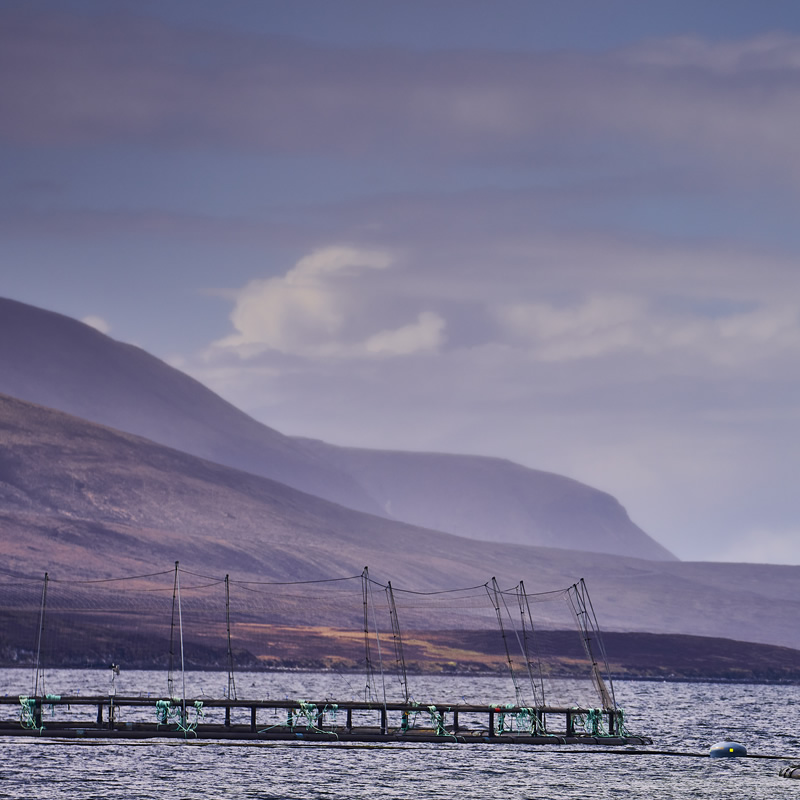
Cooke farm, Vestness, Orkney
Cooke plans expansion
Meanwhile, Cooke is pressing ahead with the development of the farm site at East Moclett on the island of Papa Westray, Orkney, which received planning permission in a unanimous decision by Orkney Islands Council Planning Committee in September 2022. Stocking is planned for early this year. Despite organised opposition to the development, no appeal has been lodged against the planning decision.
As we reported in December, Cooke is also planning to relocate and expand its farms at three sites in Orkney: Vestness, Skelwick Skerry and Cleat North. Consultation events took place in November to explain the plans to the local community.
Cooke told Fish Farmer: “Both events held in Westray and Papa Westray were well attended. The public in both areas are supportive of our approach to stakeholder engagement, with informal preapplication in spring 2023 leading to and informing formal preapplication in November 2023. The preapplication consultation period closed on 27 December 2023.”
In Vementry, Shetland, Cooke is proposing the development of a new Atlantic salmon farm to the north of the island of Vementry, in St Magnus Bay, Shetland. The aim is to apply the lessons learned in Cooke’s offshore farms in Orkney to develop a new farm in a more exposed location in Shetland.
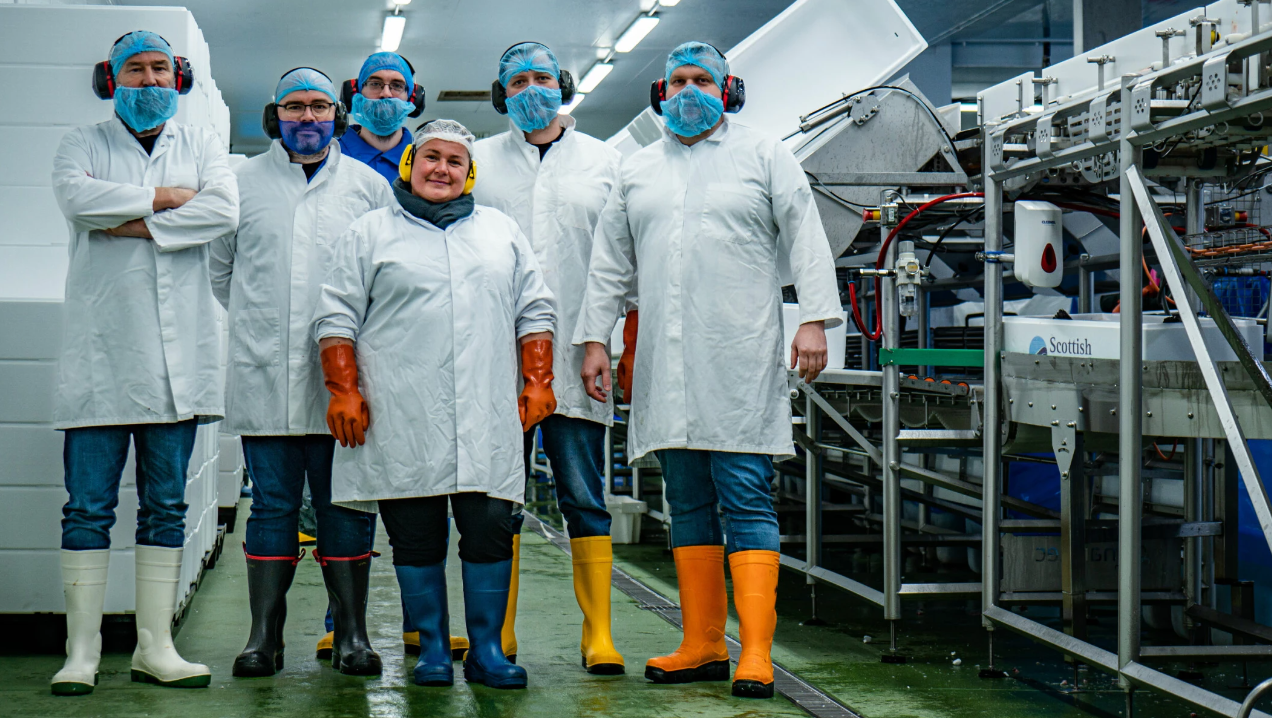
Scottish Sea Farms staff, Lerwick processing centre
The proposed site is a high-energy environment, which Cooke says will have optimal conditions for rearing strong and healthy fish, whilst minimising the potential impact on the local environment. Comments by the local community on the proposal were invited prior to beginning the official planning and consenting process for the development. The formal preapplication consultation period closed on 30 November 2023 and the company is currently collating and interpreting stakeholder feedback.
Murray Spooner, Communications Manager with Cooke Aquaculture Scotland, added: “Our salmon are farm-raised with care in Orkney and Shetland to ensure long-term social, economic and environmental sustainability of the Northern Isles.”

